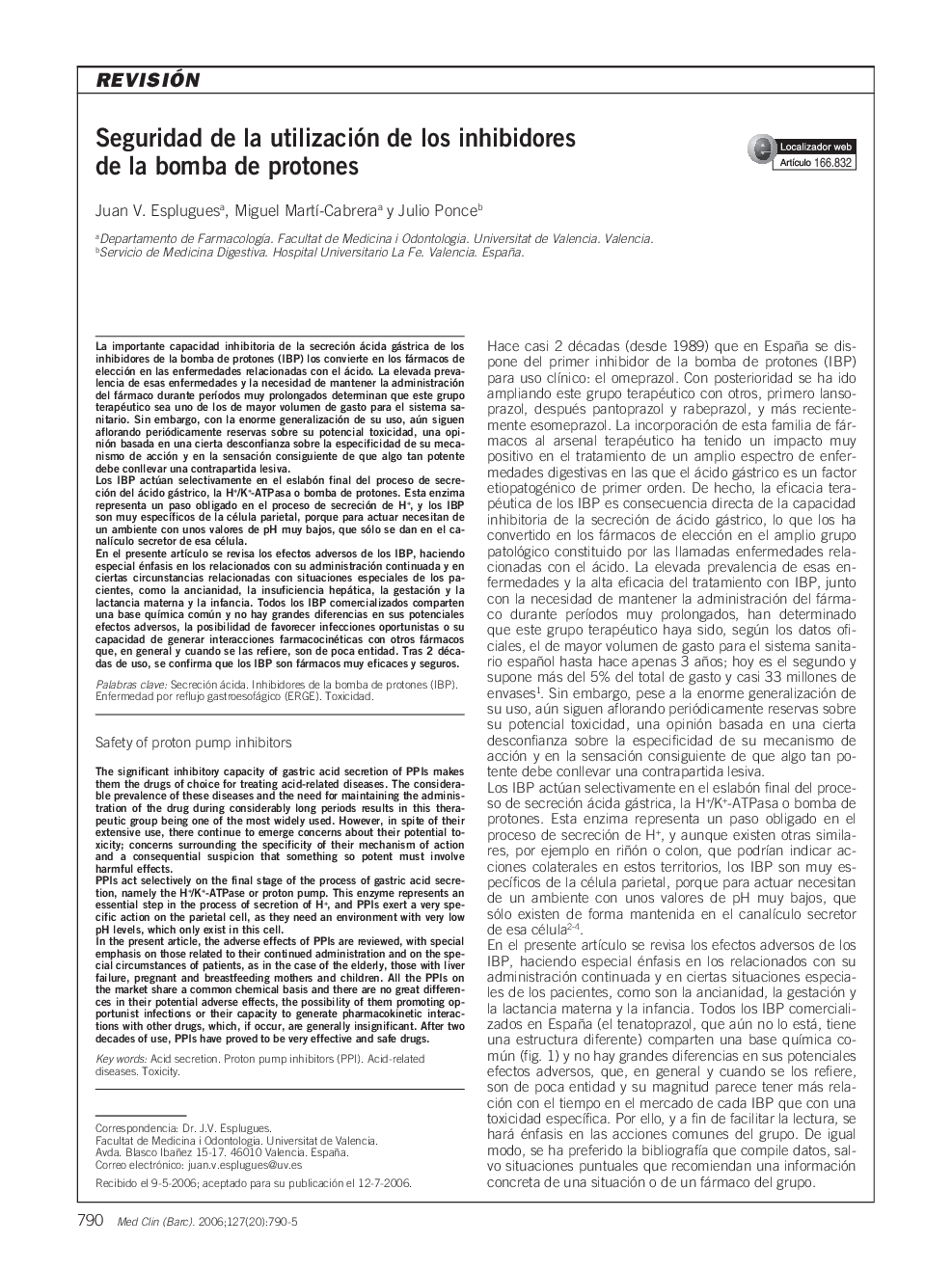| کد مقاله | کد نشریه | سال انتشار | مقاله انگلیسی | نسخه تمام متن |
|---|---|---|---|---|
| 3802940 | 1244852 | 2006 | 6 صفحه PDF | دانلود رایگان |

La importante capacidad inhibitoria de la secreción ácida gástrica de los inhibidores de la bomba de protones (IBP) los convierte en los fármacos de elección en las enfermedades relacionadas con el ácido. La elevada prevalencia de esas enfermedades y la necesidad de mantener la administración del fármaco durante perÃodos muy prolongados determinan que este grupo terapéutico sea uno de los de mayor volumen de gasto para el sistema sanitario. Sin embargo, con la enorme generalización de su uso, aún siguen aflorando periódicamente reservas sobre su potencial toxicidad, una opinion basada en una cierta desconfianza sobre la especificidad de su mecanismo de acción y en la sensación consiguiente de que algo tan potente debe conllevar una contrapartida lesiva.Los IBP actúan selectivamente en el eslabón final del proceso de secreción del ácido gástrico, la H+/K+-ATPasa o bomba de protones. Esta enzima representa un paso obligado en el proceso de secreción de H+, y los IBP son muy especÃficos de la célula parietal, porque para actuar necesitan de un ambiente con unos valores de pH muy bajos, que sólo se dan en el canalÃculo secretor de esa célula.En el presente artÃculo se revisa los efectos adversos de los IBP, hacienda especial énfasis en los relacionados con su administración continuada y en ciertas circunstancias relacionadas con situaciones especiales de los pacientes, como la ancianidad, la insuficiencia hepática, la gestación y la lactancia materna y la infancia. Todos los IBP comercializados comparten una base quÃmica común y no hay grandes diferencias en sus potenciales efectos adversos, la posibilidad de favorecer infecciones oportunistas o su capacidad de generar interacciones farmacocinéticas con otros fármacos que, en general y cuando se las refiere, son de poca entidad. Tras 2 décadas de uso, se confirma que los IBP son fármacos muy eficaces y seguros.
The significant inhibitory capacity of gastric acid secretion of PPIs makes them the drugs of choice for treating acid-related diseases. The considerable prevalence of these diseases and the need for maintaining the administration of the drug during considerably long periods results in this therapeutic group being one of the most widely used. However, in spite of their extensive use, there continue to emerge concerns about their potential toxicity; concerns surrounding the specificity of their mechanism of action and a consequential suspicion that something so potent must involve harmful effects.PPIs act selectively on the final stage of the process of gastric acid secretion, namely the H+/K+-ATPase or proton pump. This enzyme represents an essential step in the process of secretion of H+, and PPIs exert a very specific action on the parietal cell, as they need an environment with very low pH levels, which only exist in this cell.In the present article, the adverse effects of PPIs are reviewed, with special emphasis on those related to their continued administration and on the special circumstances of patients, as in the case of the elderly, those with liver failure, pregnant and breastfeeding mothers and children. All the PPIs on the market share a common chemical basis and there are no great differences in their potential adverse effects, the possibility of them promoting opportunist infections or their capacity to generate pharmacokinetic interactions with other drugs, which, if occur, are generally insignificant. After two decades of use, PPIs have proved to be very effective and safe drugs.
Journal: Medicina ClÃnica - Volume 127, Issue 20, November 2006, Pages 790-795